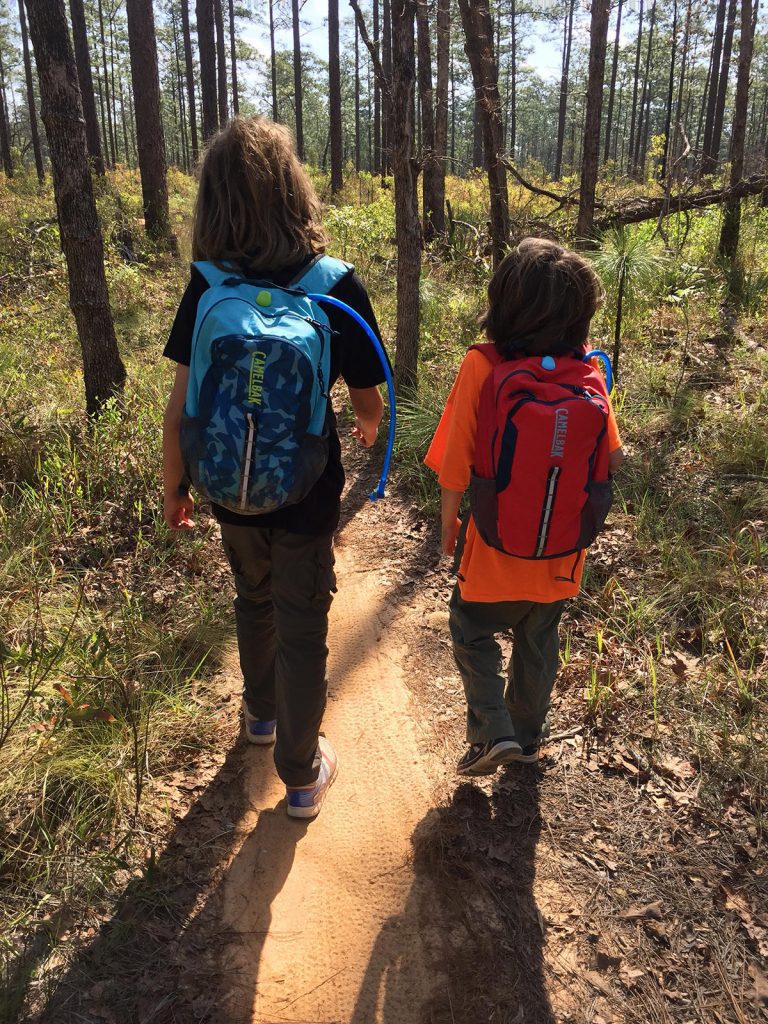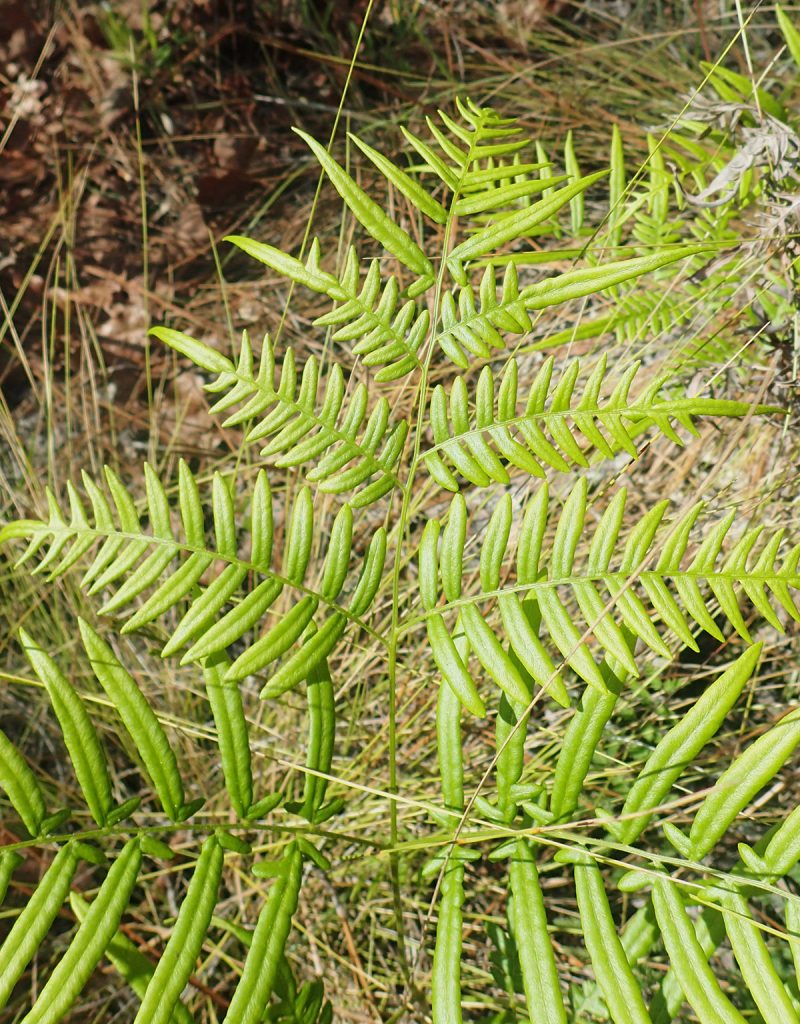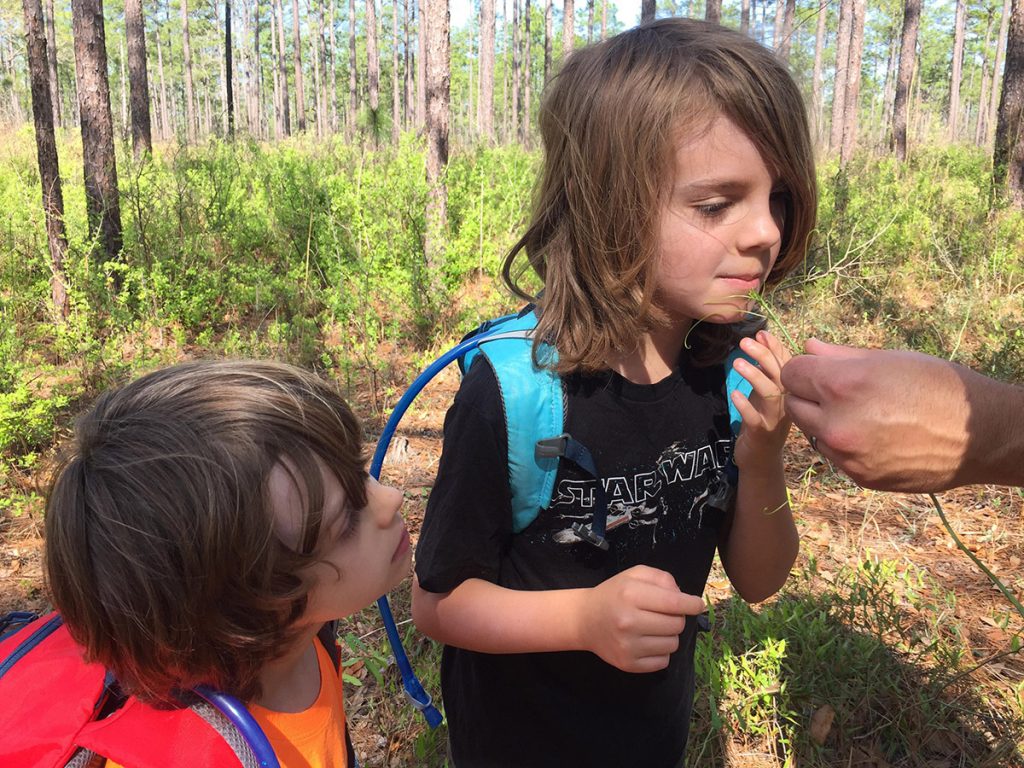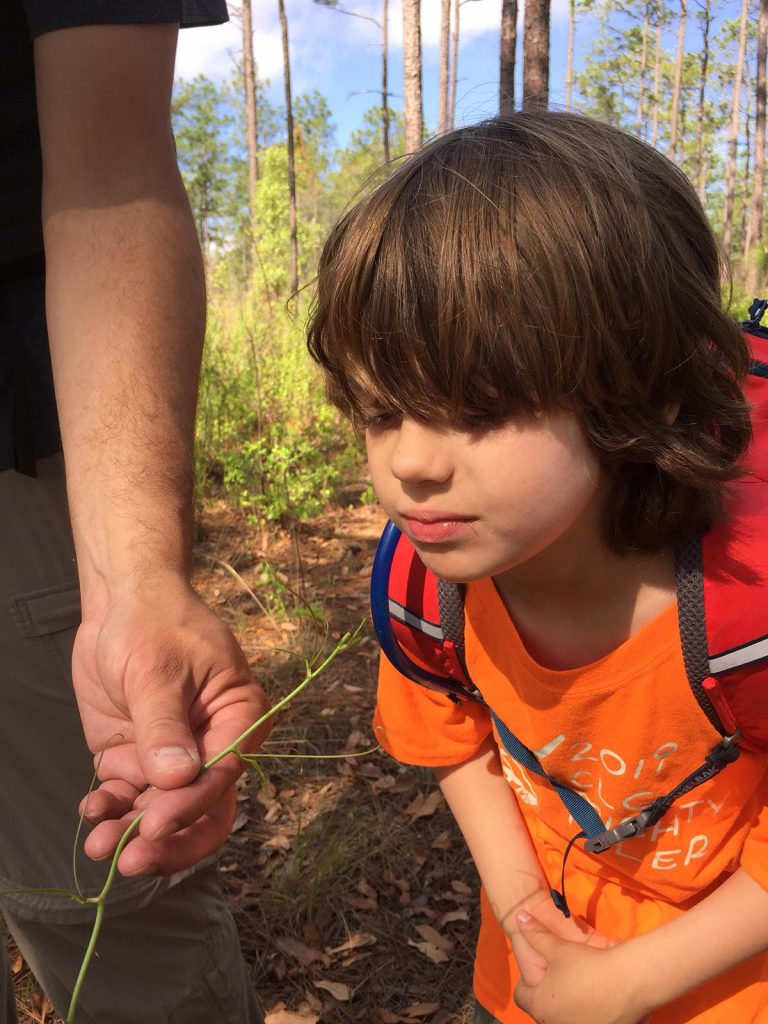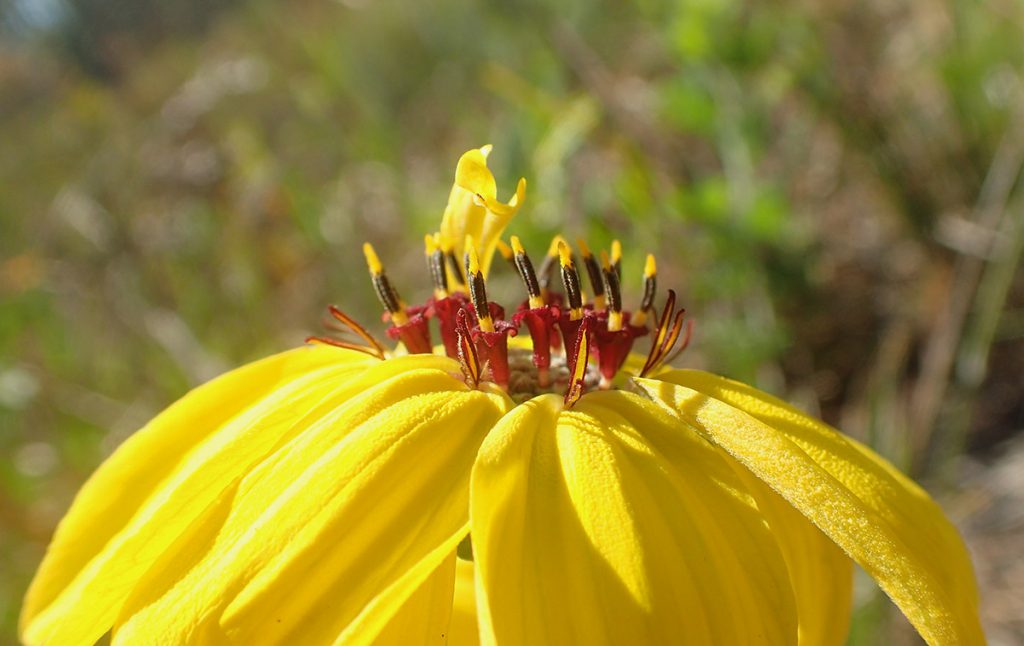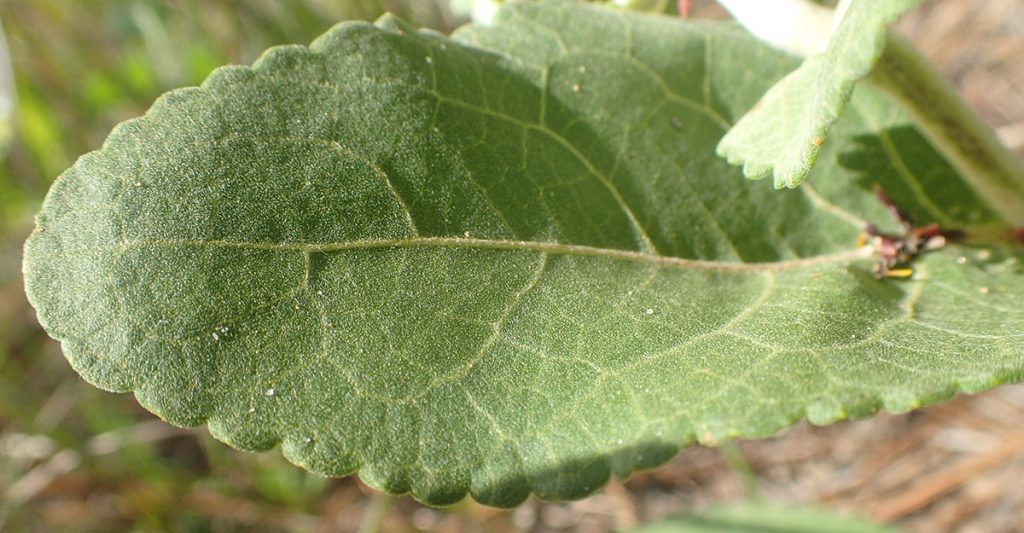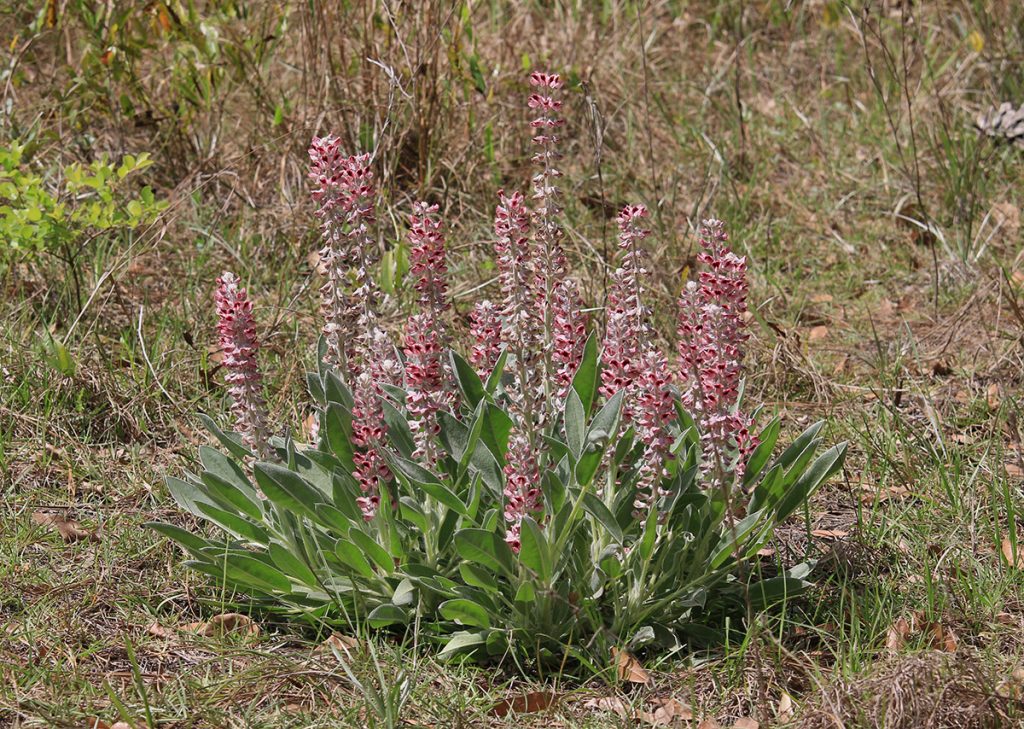
Earlier on during isolation, the family and I were feeling cooped up, like many people are these days. The Apalachicola National Forest seemed like a good place to get out and have plenty of space, and the Munson Sandhills trails are close by. It’s a favorite place to test out new camera equipment, and a place I visited daily during last year’s City Nature Challenge. And it’s also where we participate in the Adopt an Ephemeral Wetland program. It’s been one of outdoor go-to places for a few years now, and a great place to see diverse plant and animal life.
This is primarily a mountain bike trail system, which you have to acknowledge if you’re hiking it. It can be easy to become distracted by a cool wildflower or some woodpeckers flying overhead, but we need to stay aware of who might be coming down the trail. It’s rude to hike a cycling trail and not get out of the way when you see or hear them coming. After all, it’s most fun for them if they can keep moving.
Below is a map of the trails created by the US Forest Service. You can access the trail from the paved St. Marks Trail, and there’s a little space to park a few cars at the trailhead where the two meet. You can also access different parts of the trail from the forest roads, which is what we did. Note that there is a gun range near the trails, and it’s not uncommon to hear gunshots while hiking or cycling.
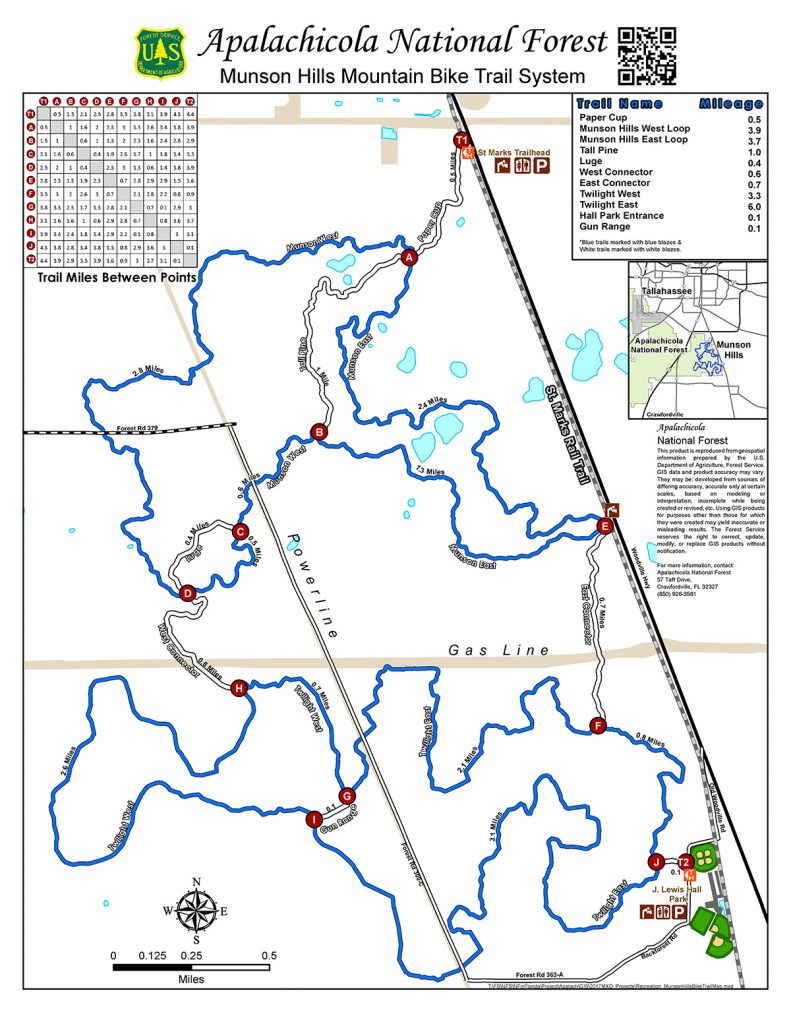
Here is a link to the US Forest Service site for the trails. And here it is in Google Maps, so you can see exactly where it is:
We drove in and joined the trail where it meets Forest Road 379. From there, we hiked a little over a mile and back to Point C on the map. It was a leisurely morning trip full of early spring blooming wildflowers (our hike took place on March 28).
Berries Along the Trail
We see a lot of what typifies this area, especially the early spring flowers in bloom. I would like to have seen sandhills milkweed, which was starting to bloom, but I’m not complaining.
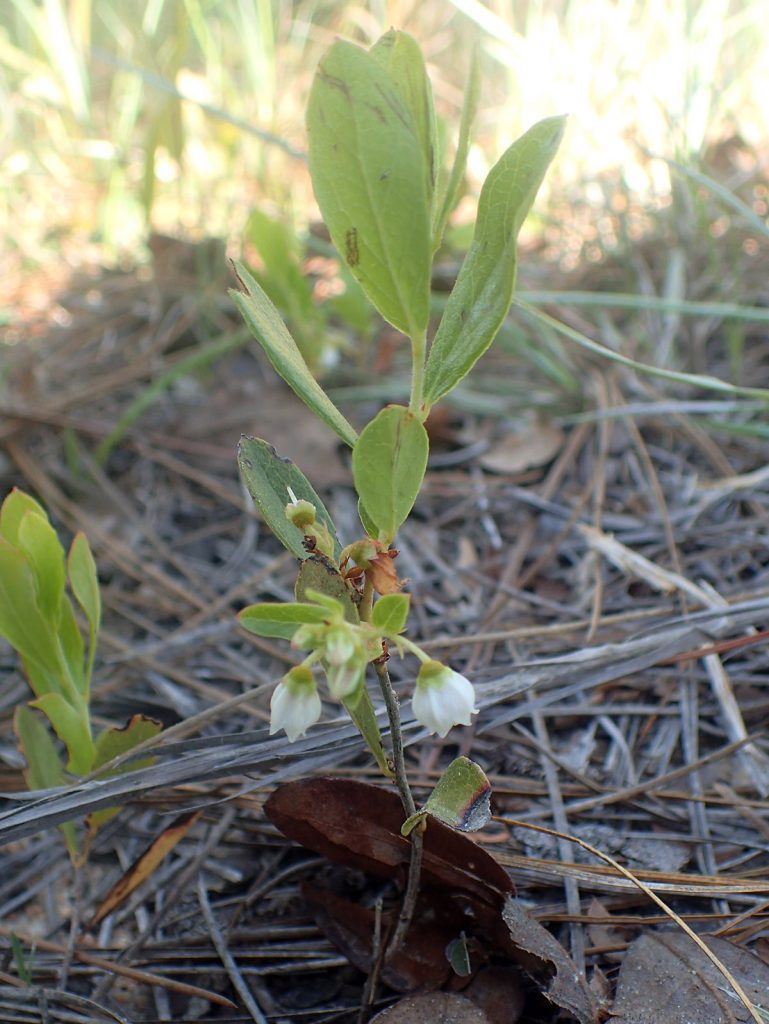
This one is right outside the car. These sandhills are filled with different species of blueberries and huckleberries, and many of these are flowering and starting to produce berries now. By June, the ripe berries will feed birds and other critters, and those of us who can stand the heat.
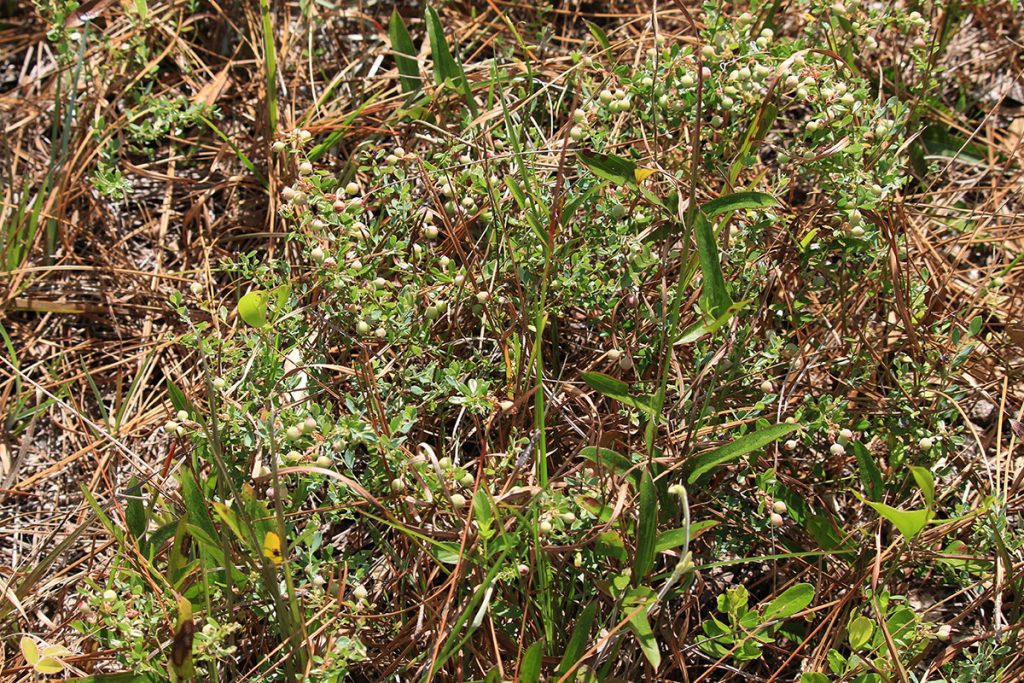
Here’s a related species. It already has plenty of green berries.
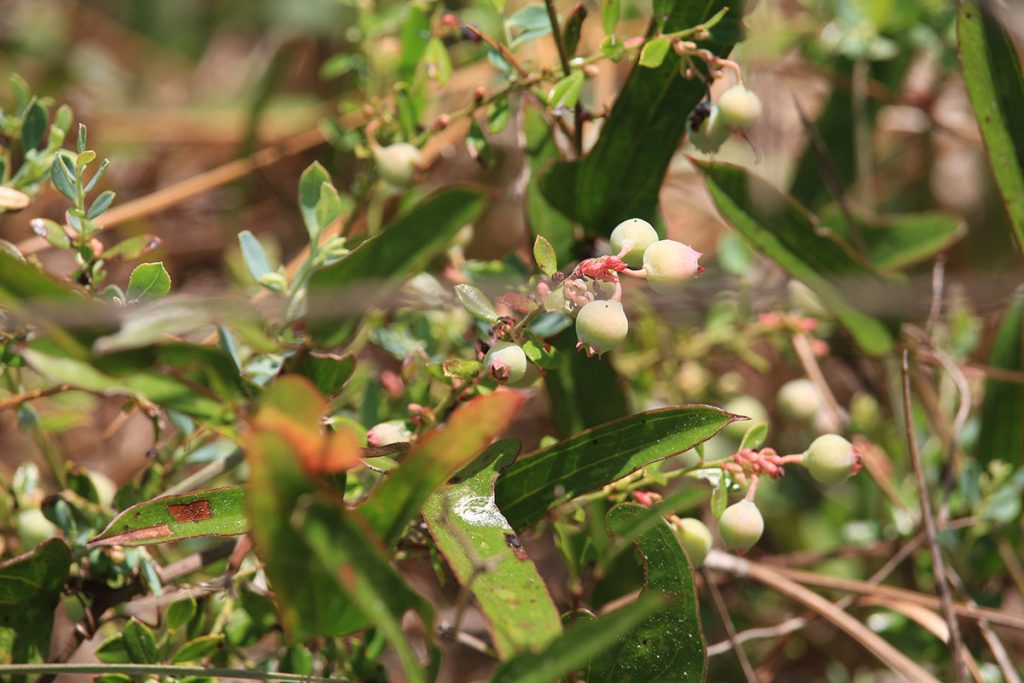
But what if I’m hungry now?
It’s the one thing they (okay, I) know they can always eat in the forest. We’re never too far from a smilax vine, it seems.
Sinkhole Exploring
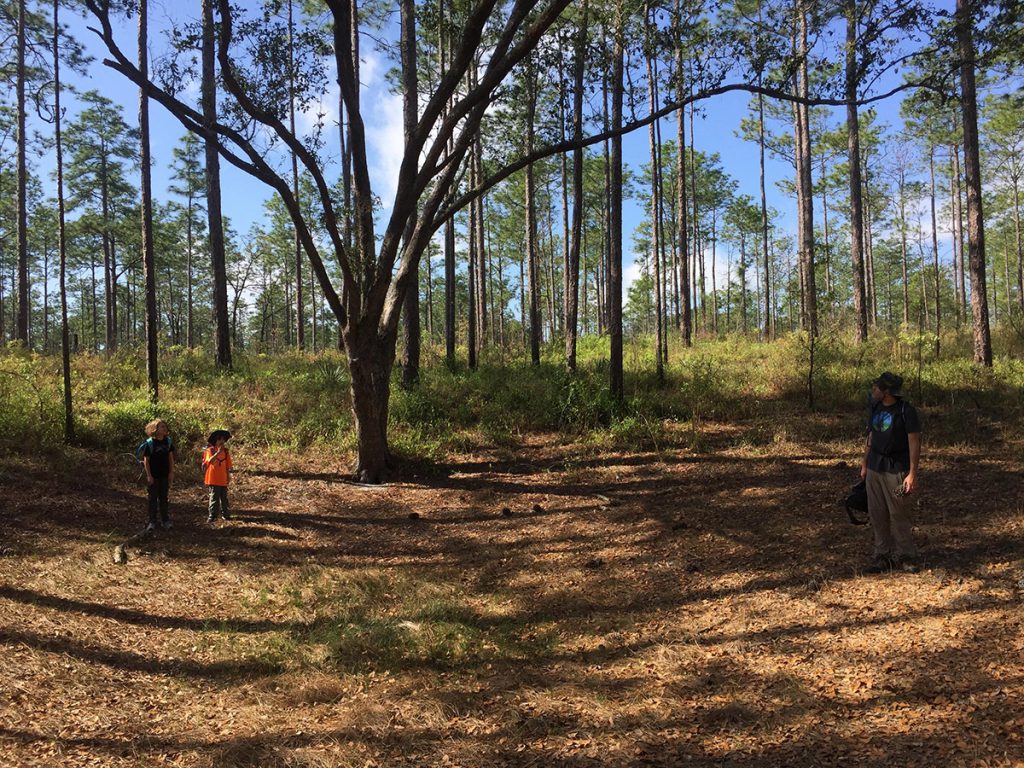
Not too far from the car, we see this bare depression just off the trail. This region of the forest is known for karst activity in the form of ephemeral wetlands. Many of these are dry right now, but when the underlying aquifer is full enough, they hold water. The ground beneath them is porous, but not open like a sinkhole.
Here it looks like a sinkhole is forming. The ground is sagging like when the underlying limestone has dissolved and the earth above starts to sink into it. Harley Means showed us this kind of activity at Fred George Greenway a couple of summers ago. I wonder if this will be a different type of water body than the surrounding wetlands, or if this is an early stage in the formation of an ephemeral wetland.
While the boys ran around this big empty space, I wandered around the edge of the bowl and found one of my favorite sandhills plants:
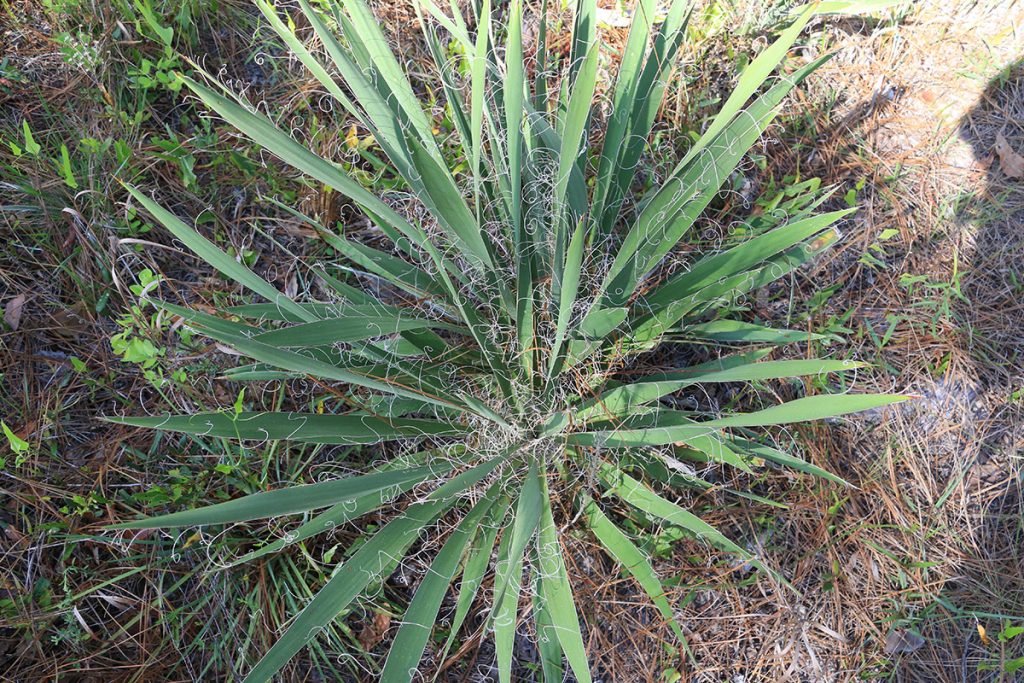
Sandhills are a longleaf pine/ wiregrass habitat, like those in the Red Hills. But the different soil types in these locations, and their ability to hold water or let it flow downwards, leads to some variation in the plants we see in each place. Here we see a yucca species, a plant that can thrive in sandy, nutrient poor soils that drain water. Last summer, we visited a few National Parks in Colorado. As we drove west, and the land we saw became more and more arid, we started seeing more and more plants in the Yucca genus.
Another plant genus we saw a lot of out west is one of my favorites here in the sandhills.
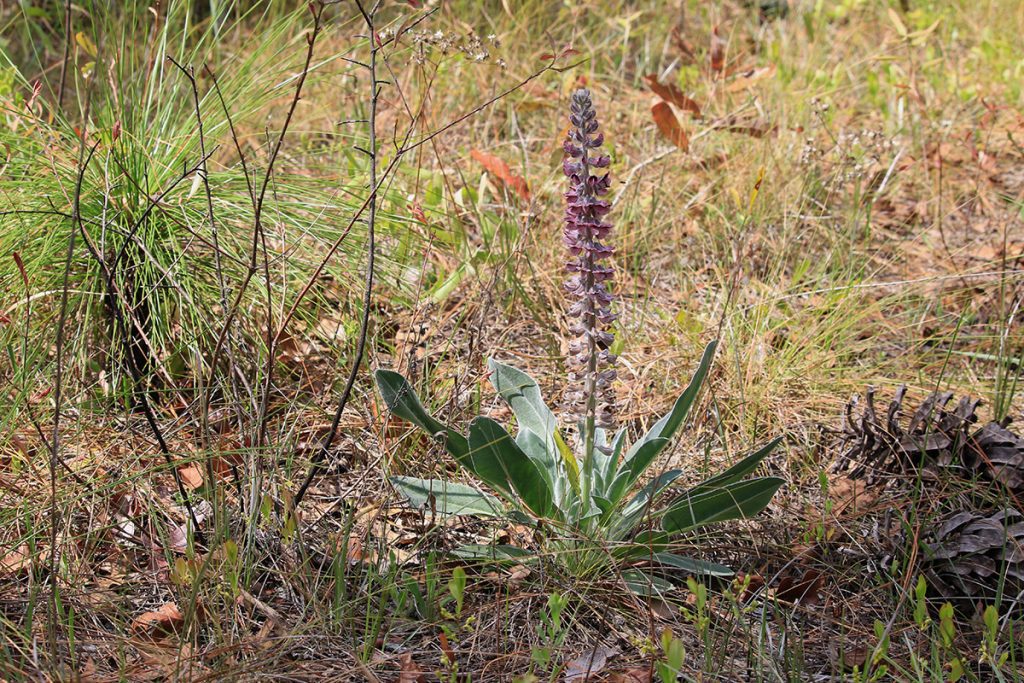
Sundial and Lady Lupines
A fun fact I learned during a ranger led hike at Black Canyon of the Gunnison National Park: lupines are nitrogen fixers. This is helpful in sandy soils, which are more rock fragments and less organic material. Red clay, in addition to having smaller, more tightly bound particles (which keep water from seeping through as easily), is more nutrient rich. So in sandhills, a plant that can convert the nitrogen in the air to the nitrogen plants use, can grow easily while aiding plants around it.
The flower above, next to that young longleaf pine, is a lady lupine. On the road in, we passed the larger patch I used for the banner image. Here’s a closer look at that:
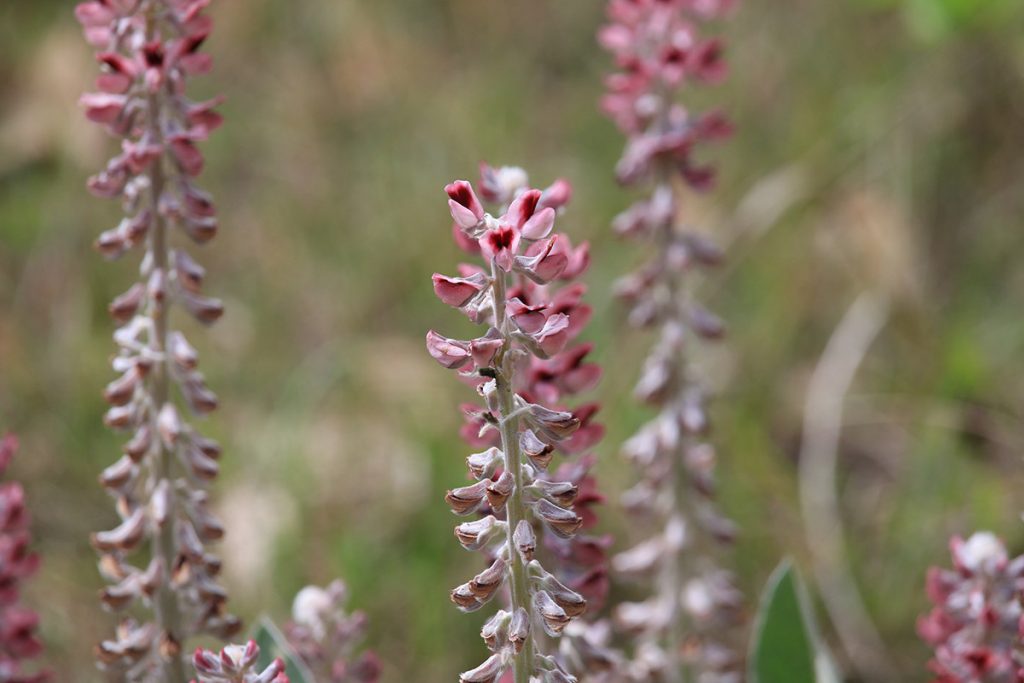
The other lupine we find in the Munson Sandhills is the sundial lupine, which I got to know last spring. It’s the larval host plant of the frosted elfin butterfly. Fire suppression and habitat loss have fragmented the plant’s range, and made the elfin rare. The Munson Sandhills are a stronghold for the butterfly.
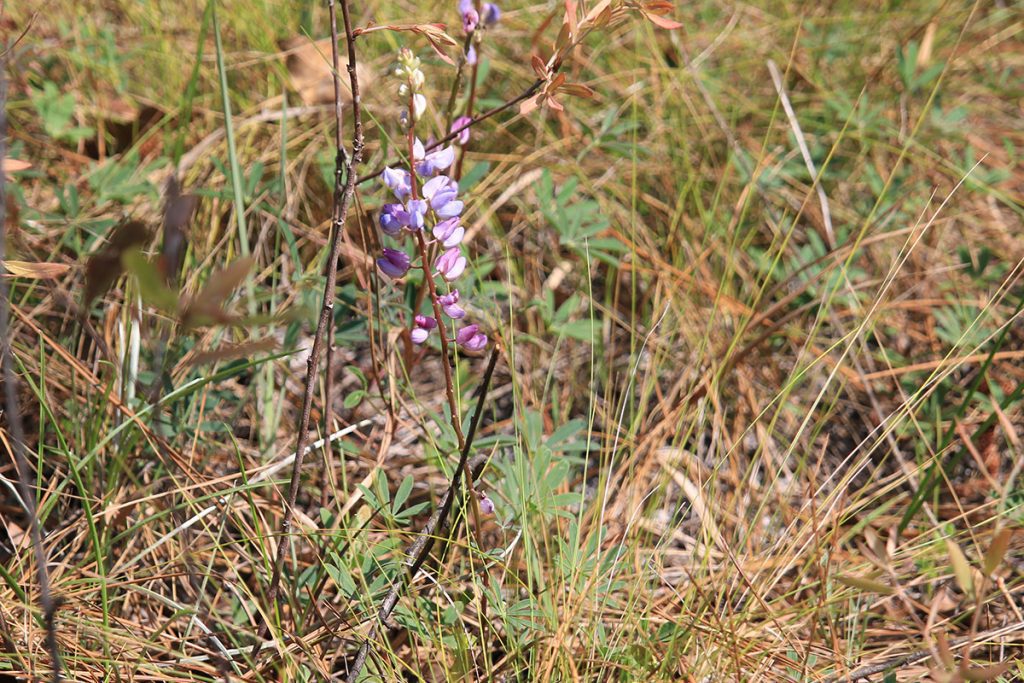
When I was out here last year, Dean and Sally Jue took care when treading around the lupine plants. We’re in that short window during which the frosted elfin flies and breeds. There might be caterpillars on or around the plants. So I’ll keep my distance.
As I take these photos, I hear a rattling. I look down to see a green snake, which quickly slithers away. It’s not patterned like any rattlesnake found in our area. Later on our hike we pass an ephemeral wetland where Ryan Means is checking on the striped newts he and the Coastal Plains Institute have recently released. He confirms that other snake species, in this case an eastern rat snake, mimic rattlesnakes to scare predators.
Signs of Animals in the Forest
The snake is out of sight before I can point a camera at it.
We’re approaching midday, and there have been a fair amount of cyclists zipping by. We’re not seeing much in the way of wildlife right here on the trail. Some days are like that. But we can see a few signs of the animals that live here, animals iconic of this type of habitat.
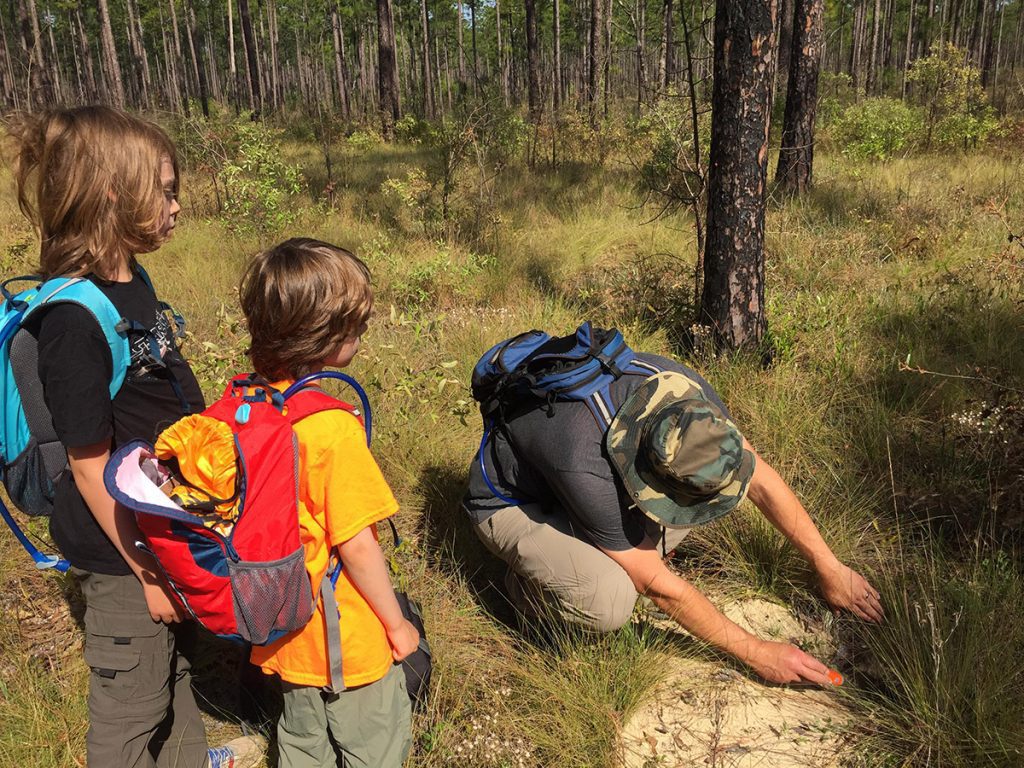
This was the one gopher tortoise burrow we found right along the trail. We approached it with caution; after all, eastern diamondback rattlesnakes use the burrows for shelter. I took a quick peek and shone a flashlight in there, and we didn’t see anything.
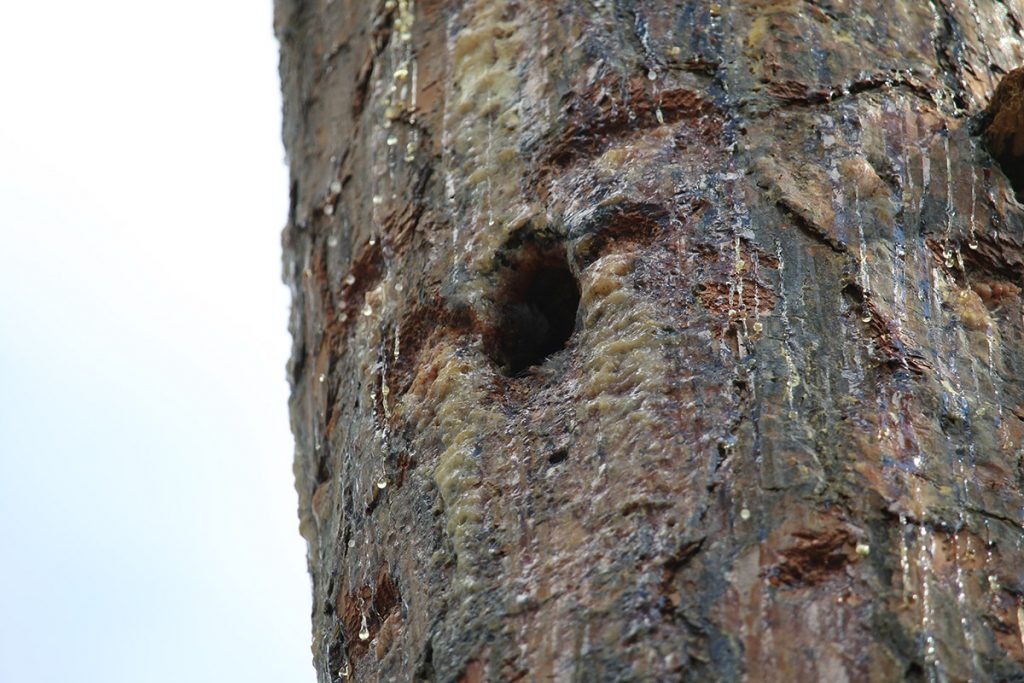
We pass by a tree with a white band painted around its trunk. This is how the US Forest Service marks trees with red cockaded woodpecker cavities, or that are likely candidates for nesting. We look up and see the nest. You can see the flat rectangular area around the cavity; this is an artificial nest.
The woodpeckers have scored the tree, which is why we see sap around the cavity. This makes a slippery approach for predators looking to ambush the woodpeckers or take their eggs.
We took a little while getting out of the house this morning, but when I have gotten here a little earlier in the morning, I’ve seen red cockaded woodpeckers flying around. We see plenty of zebra swallowtail butterflies, but only flying past us. I don’t get a photo.
At least there’s one animal that I can easily photograph on any trip to the Munson Sandhills:
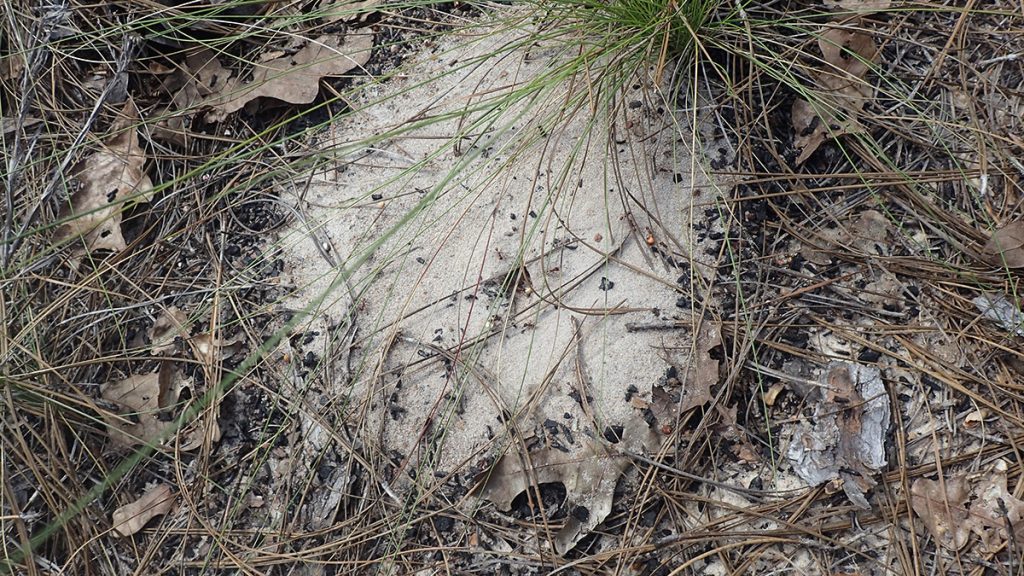
These ant mounds are unmistakable in a sandhills habitat: a sand mound surrounded by black bits of charred pine needle. They belong to the Florida harvester ant.
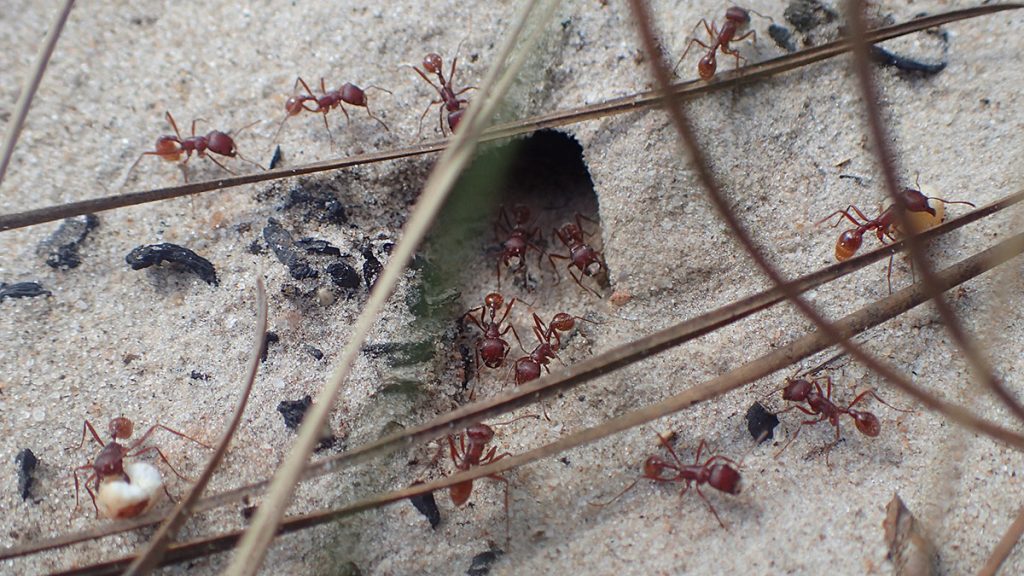
More Wildflowers of the Munson Sandhills
These trails aren’t far from home, or from WFSU Public Media, so I end up coming here throughout the year. Part of the fun of visiting during different seasons is seeing different wildflowers in bloom. Here are a few more we can see in the early spring:
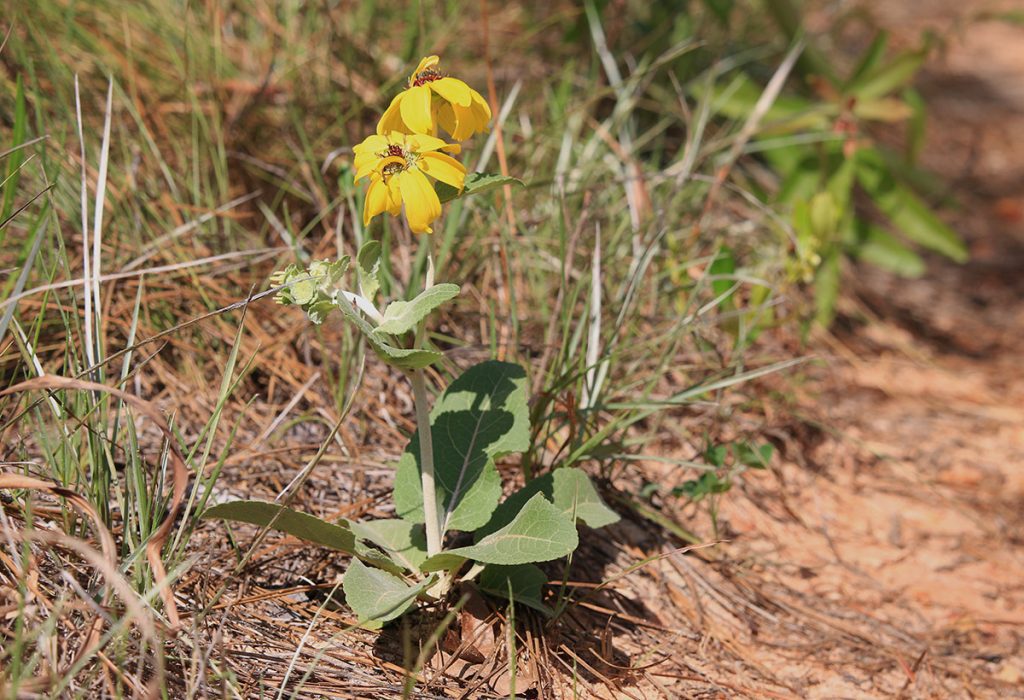
Here’s a pretty one growing right along the trail. It has pretty leaves in addition to a large, striking flower:

Soft Greeneyes (Berlandiera pumila), closeup on flower. 
Soft Greeneyes (Berlandiera pumila),closeup on leaves.
And here’s a wildflower I usually see throughout the Munson Sandhills in the spring:
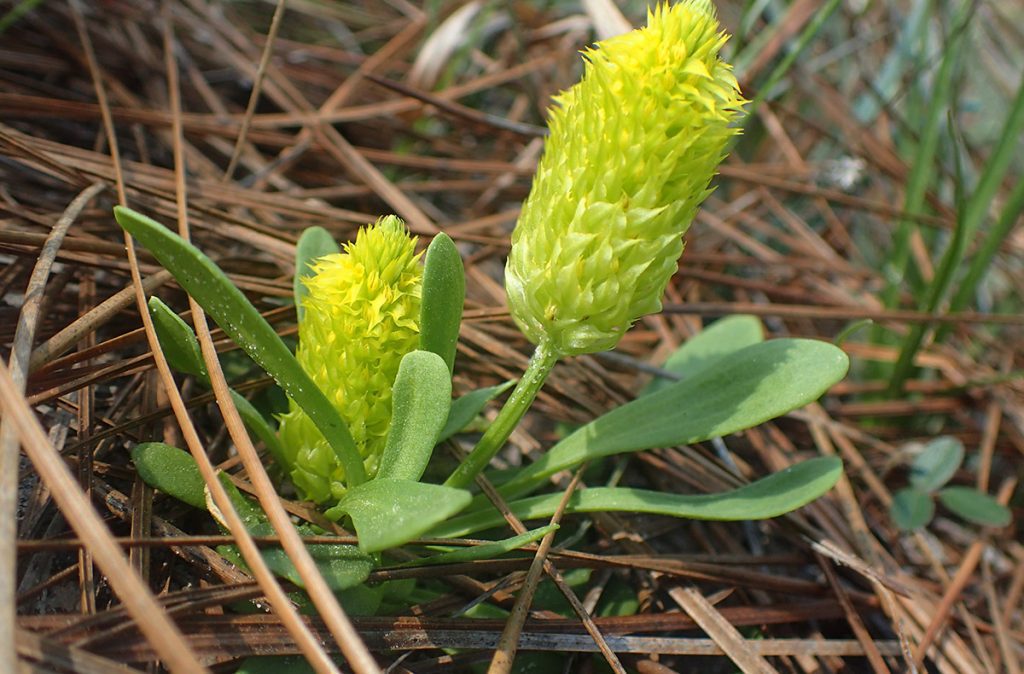
This candyroot is just starting to bloom. When it does, fully, it will lose the green in its flower. Not too long ago, I traveled to St. Vincent Island on a shoot. There, I saw a related species in the Polygala genus: orange milkwort. I also saw another lupine species, the federally listed Gulf Coast lupine. It’s interesting to see the related species in habitats that are similar habitats, though one is coastal and the other is landlocked.
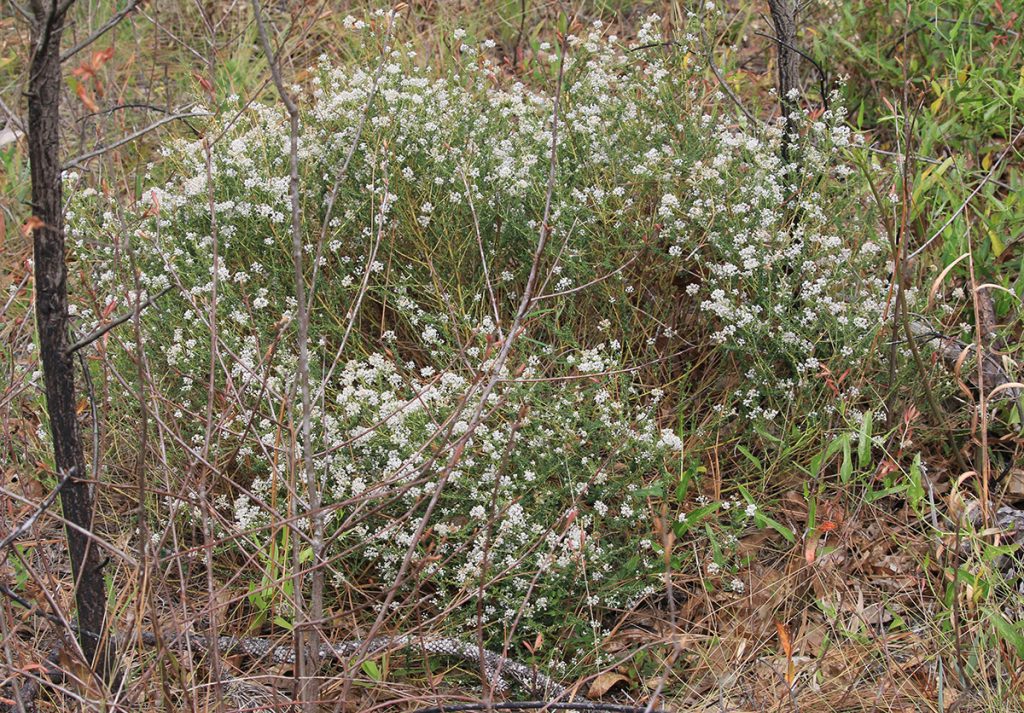
Here is a flowering bush we see on the way back to the car. I take multiple photos for iNaturalist. The first is shot of the plant in its entirety, and then I get a second of the flowers closer up:
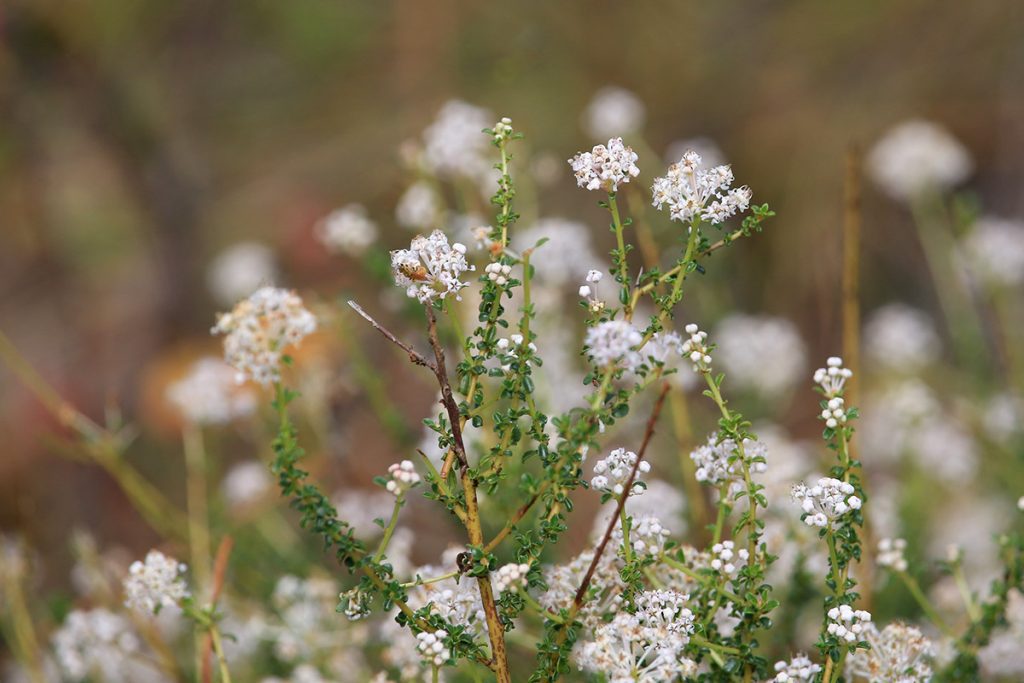
I try to give iNaturalist users a good view of flowers, leaves, and the overall shape of the plant. This helps the knowledgable users better identify the plant. Later on when I upload my photos to the app, I see that there is a small bee pollinating the flowers:
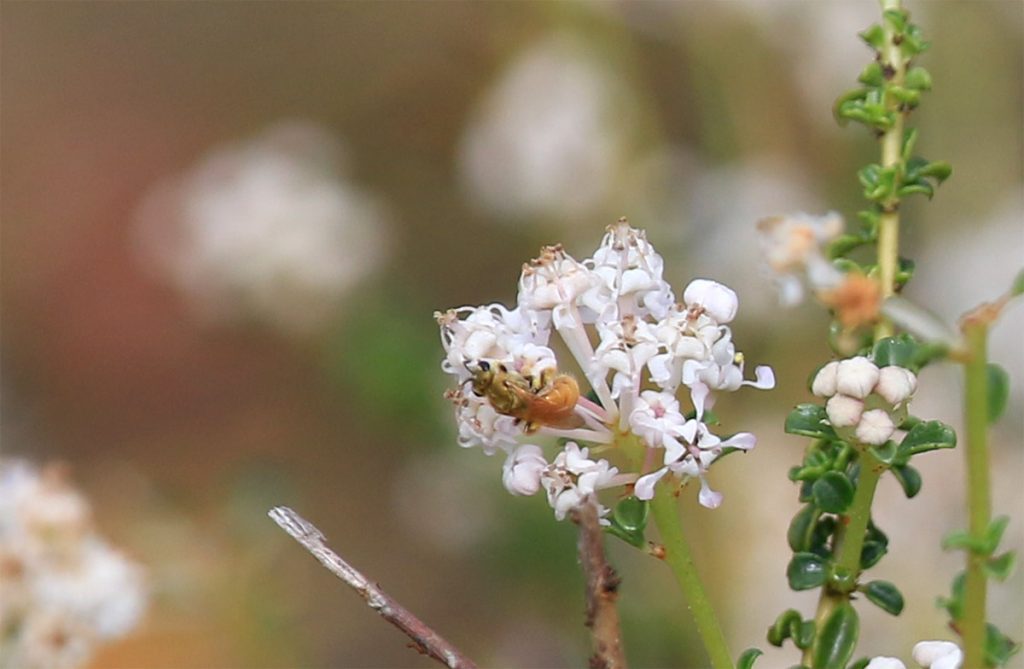
See you all next time!
A little over a month after we hiked here, we hiked the Garden of Eden Trail on the Apalachicola Bluffs and Ravines Preserve. Part of that is a sandhills habitat like this one, though we see whole different assortment of plants growing there. Hundreds of different plants are found in the understory of a longleaf pine ecosystem, and every forest site has a different collection. It’s a great habitat for leaving the trail and exploring, as so many of the plants here aren’t very tall at all.
